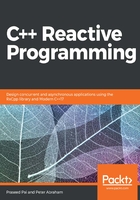
Reactive Programming Model – Overview and History
The X Windows system, Microsoft Windows, and IBM OS/2 Presentation Manager made GUI programming popular on the PC platform. This was a major shift from the character mode user interface and batch process style programming models that existed before them. Responding to events became a major concern for software developers worldwide and platform vendors resorted to the creation of low-level C-based APIs that relied on function pointers and callbacks to enable programmers to handle the events. The programming models were mostly based on the co-operative multithreaded model, and with the advent of better microprocessors, most platforms began to support pre-emptive multithreading. Handling events (and other asynchronous tasks) became more complex and responding to events in the traditional way became less scalable. Even though excellent C++-based GUI toolkits made their appearance, event handling was done mostly using message IDs, function pointer based dispatches, and other low-level techniques. A prominent compiler vendor even tried adding language extensions to the C++ language to enable better Windows programming. Handling events, asynchrony, and associated issues require a fresh look at the problem. Luckily, the Modern C++ standard has support for Functional Programming, language-level concurrency (with a memory model), and better memory management techniques to enable programmers to work with asynchronous data streams (by treating events as streams). This is achieved using a programming model called reactive programming. To put things in perspective, this chapter will outline the following topics:
- Event-driven programming model and how it has been implemented in various platforms.
- What is reactive programming?
- Different models of reactive programming.
- Some simple programs to make conceptual understanding better.
- The philosophy of our book.